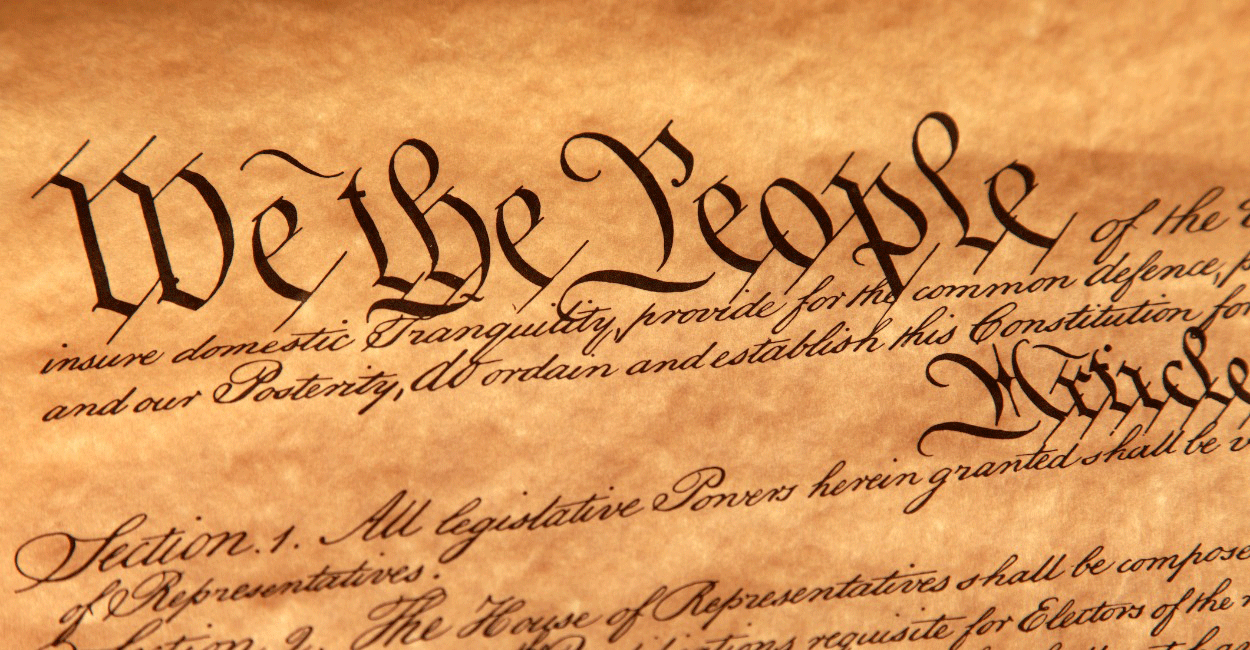 In the wonderful anime series Kino’s Journey, a character who wanders the world in search of a place to settle down finds a country where people live in relative peace and freedom and are welcoming to newcomers. His companion comments that it seems like a perfectly normal place, to which he replies, “A lot of people have to work very hard to make a place normal.”
In the wonderful anime series Kino’s Journey, a character who wanders the world in search of a place to settle down finds a country where people live in relative peace and freedom and are welcoming to newcomers. His companion comments that it seems like a perfectly normal place, to which he replies, “A lot of people have to work very hard to make a place normal.”
Democracy is not a spectator sport; but to play the game you have to know the rules. (Ok, it’s not a game, either, but just roll with it.) I’m studying the Constitution, one clause at a time. I’m up to Article 1 §8.4, on naturalization and bankruptcy.
Naturalization is a big topic, and I ran out of steam last week before I got to bankruptcy. I thought about skipping it and moving to the next clause, but the number one cause of bankruptcy in America is the cost of healthcare. Since the new tax law guts the ACA, bankruptcy may get relevant to a lot more people soon. So what does the Constitution say about it?
Article 1 §8.4
Article 1 §8 says that Congress shall have the power:
To establish an uniform Rule of Naturalization, and uniform Laws on the subject of Bankruptcies throughout the United States;
Basically, bankruptcy laws shouldn’t vary by state because they are established by Congress. It sounds so simple I don’t trust it. The clauses that sound straightforward always have the densest thickets of case law. Oh, and just because I went to Jesuit school, I feel like a definition is in order:
Bankrupt: (of a person or organization) declared in law unable to pay outstanding debts.
In other words, bankrupt isn’t just broke. Lots of people go broke without going bankrupt. Bankrupt is an actual legal declaration that you can’t pay what you owe.
This one starts on page 319 of the Annotated Constitution.
Who Gets Bankrupted
Sometimes we Americans like to pretend we invented democracy from scratch. But the Framers were mostly writing their idea of “England but better.” In the case of bankruptcy, they broke with English tradition almost immediately (the first bankruptcy law was passed in 1800) by expanding bankruptcy from traders to anyone who can’t pay their debts.
In our capitalist society, bankruptcy is the ultimate failure. Even though it’s (almost literally) a get out of jail free card, going bankrupt is much more to avoided and certainly more embarrassing than getting divorced, or fired, or sometimes even going to jail. With so much stigma attached to it, it’s a little strange to realize that the ability to go bankrupt is a democratic victory. In the old days, you had to be somebody important to go bankrupt. Everybody else just went to jail.
Liberalization of Relief
It looks like early bankruptcy law wasn’t much more than a way to stay out of jail – it was still geared towards minimizing the losses of the creditors. But over time, the protections for the debtors expanded. According to the Annotated Constitution, starting with the second bankruptcy law (1841), Congress has shown an increasing interest in rehabilitating the debtor. The theme underlying most Supreme Court decisions on bankruptcy law has been fairness in the distribution of the bankrupt’s funds.
Limitations on Congressional Power
Where my checks and balances at? Unless you are new her, you have noticed that the judicial history of most clauses is defining the boundaries of power for the branches of government. Why would bankruptcy be any different? In fact, this clause has been affected by two Constitutional Amendments – the Fifth and the Tenth. I’ll deal with them when I get there. But for now, the Due Process Clause of the Fifth limits Congress’s power to deprive secured creditors of repayment of a debt.
The Tenth Amendment basically says that unless the Constitution says Congress has a power, it goes to the states. Because Congress may not supersede the power of a state to determine how a corporation shall be formed or dissolved, a corporation that has been dissolved by a state court may not file a petition for reorganization under the Bankruptcy Act.
State Insolvency Laws
The branches of government are usually pretty quick to defend their metaphorical territory, but Congress took its time getting interested in bankruptcy law. They only passed a couple of laws in the 19th century and repealed each of them after a couple years. So, there wasn’t any national bankruptcy law for most of the first hundred plus years of the republic.
In the absence of federal leadership, the states stepped up. The Supreme Court ruled that somebody’s got to do it in Sturges v. Crowninshield (1819), arguing that the states may enact insolvency laws, because it is not the mere existence of the power but rather its exercise that is incompatible with the exercise of the same power by the states.
There is one area of disagreement in SCOTUS judgements related to this clause. Does federal bankruptcy relieve an individual from penalties (like suspension of their driver’s licenses) for failure to pay traffic fines? I know Constitutional law is about getting to the principles behind specifics, but I just can’t get worked up about this question.




About the author